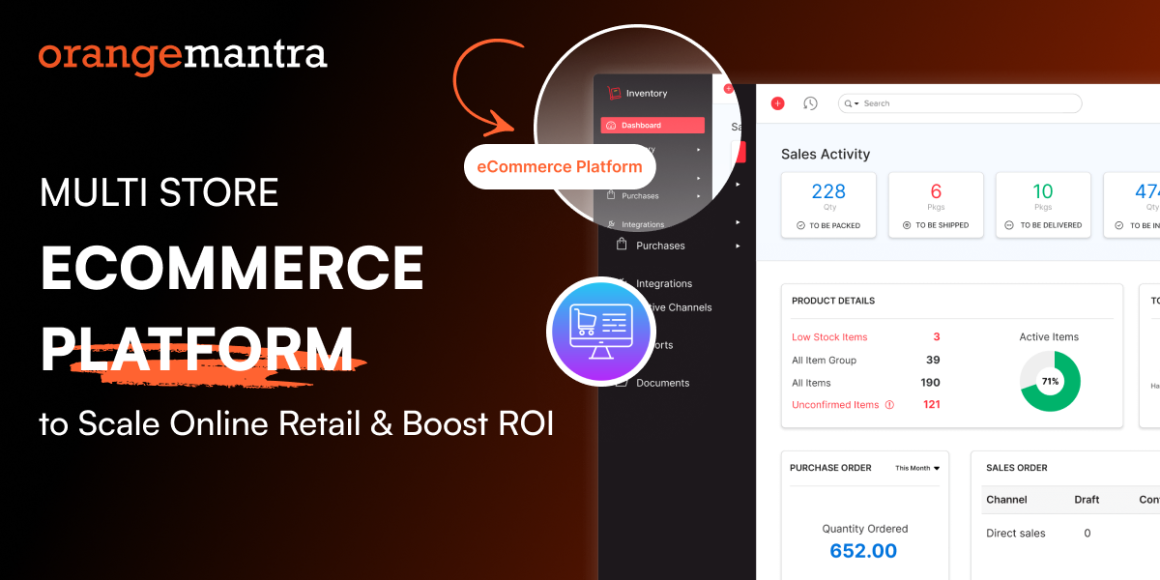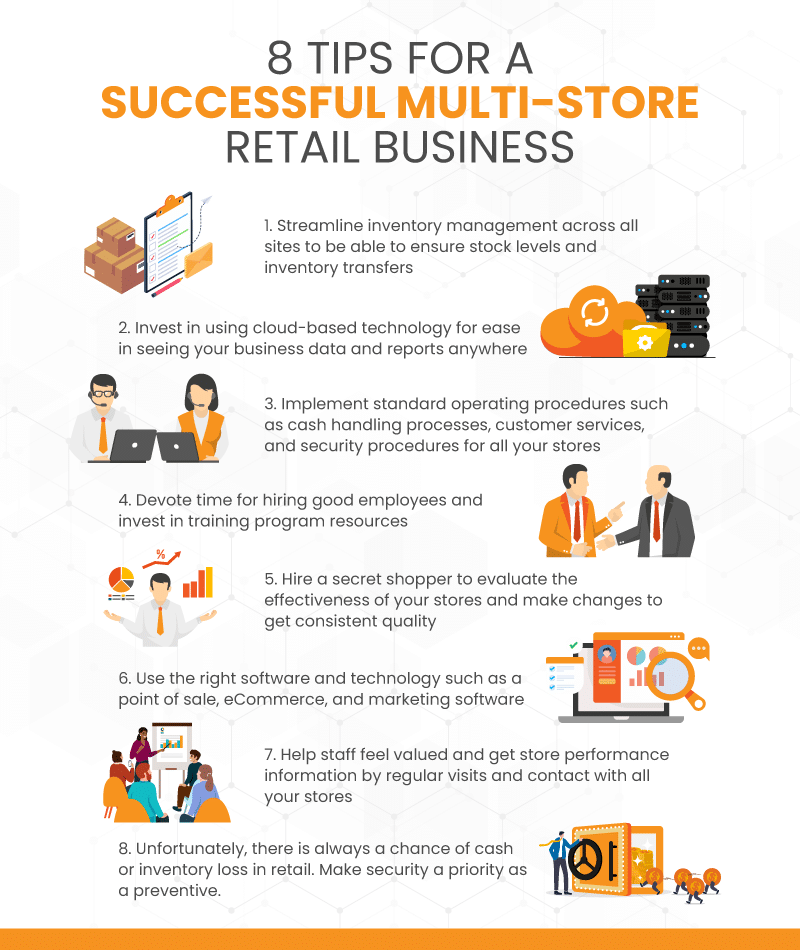In today’s dynamic online retail world, firms are constantly looking for new ways to scale. And serve varied client segments. Multi store eCommerce platforms have emerged as a game-changing solution. As,it allows businesses to manage many shops from a single platform easily. Businesses that use multi-store eCommerce get a huge advantage from various platforms and enhanced ROI. Let’s dive in to know more.
Table of Contents
What is multi-store eCommerce?
Multi store eCommerce platform is a system in which a company operates many online shops. It targets various markets, all administered through a single administrative interface. This method reduces the complexity associated with managing many eCommerce sites. If businesses handle product categories for global markets multi-store systems streamline operations. It allows organizations to maintain control and scalability without sacrificing unique shop identity.
Benefits of a multi store eCommerce platform for businesses
Here are some advantages of integrating multiple stores.
Enhanced brand visibility
Operating numerous internet storefronts allows you to target different market segments. Each storefront is customized to reflect users’ preferences. This level of personalization improves brand awareness across diverse audiences and allows firms to develop a stronger market presence with direct response to specific demands.
Improved SEO Performance
In a multi-store system, each store gets optimized for different keywords and marketing. This tailored SEO method enables firms to appear with higher SERPs for broader search queries. As a result, it generates more organic traffic for the various stores. Furthermore, this design opens up more chances for backlinks and content marketing.
Centralized data management
Lastly, a multi-store platform is to aggregate operational data from multiple locations. This centralization streamlines everything from inventory control to CRM. Businesses can use real-time insights and consolidated reporting to make data-driven decisions. Plus, it enhances efficiency, lower costs, and identify new growth opportunities. And all while managing operations from a single unified system.
How to implement multi-store eCommerce solutions?
Here is the step-by-step guide to implementing multi-store management.
Unified inventory management
With several stores, efficient inventory management becomes more challenging. A centralized system guarantees that stock levels are updated in real-time. So, it lowers the likelihood of overselling or stockouts. It gives a consolidated view of inventory movement for improved forecasting and fulfillment. This improves both efficiency and customer satisfaction by reducing order difficulties.
Consistent customer experience
Consistency across all shops is essential for creating brand loyalty and confidence. Regardless they should receive the same service quality, brand identity, and policy. It includes return processes, shipment timetables, and customer support responsiveness. A well-executed multi-store strategy offers smooth user journeys that feel connected.
Multi-store eCommerce
Multi store eCommerce platform improves the purchasing experience by providing curated options. Users like websites that cater to their individual demands and cultural preferences. Businesses can also assign dedicated customer support to each location and relevant help. This personalized strategy results in stronger client relationships and improved retention.
Effective marketing strategies
Each store should have a marketing strategy targeted to its intended demographic. Using analytics to segment customer behavior enables targeted marketing strategies. Creating customized messaging for different segments via email or targeted ads. Also, it can greatly increase engagement and conversions. A multi-store strategy allows firms to run separate campaigns for each store with management.
Challenges and solutions in multi-store eCommerce setup
Here are the challenges you face in retail eCommerce platform.
Handling technical complexities
Managing many storefronts entails dealing with technical challenges. Such as system integrations, security flaws, and cross-platform functionality. These issues are overcome by investing in a dependable and scalable eCommerce infrastructure. Automation tools, CDNs, and a CMS can help expedite updates and ensure uniform performance.
Managing diverse needs
Diverse storefronts cater to diverse client personas with businesses to manage various expectations. To effectively manage these demands, you need flexibility that offers personalized experiences. Furthermore, training support workers to understand each store’s target customers. They can provide the appropriate information at all touchpoints.
Ensuring data security
When dealing with various stores and data, security becomes increasingly important. Businesses must implement strong cybersecurity safeguards. Such as firewalls, SSL certificates, regular software updates, and security audits. Compliance with data protection requirements like as GDPR and HIPAA is critical. Secure and encrypted data exchanges help to create consumer trust for long-term success.
How do measure success in a multi store eCommerce platform?
Let’s look at how can you measure your multi-store ecommerce open-source success.
Key performance indicators
Monitoring the performance of a multi-store eCommerce store arrangement necessitates tracking KPIs. Such as total sales, conversion rates, average order value, CAC, and customer lifetime value. These indicators offer a thorough view of each store’s effectiveness. And assist firms in determining which initiatives are producing the best results.
Active customer feedback
Customer feedback is an effective method for assessing satisfaction and improvement areas. Regularly collecting reviews, conducting surveys, and promoting direct input from a wider user base. As it can help unearth insights that analytics alone may overlook. This qualitative feedback complements quantitative data and improves the consumer experience.
Sales conversion rates
Sales and conversion rate analysis is critical for determining profitability. It enables firms to identify high-performing establishments and apply their tactics. For establishments that fall behind, this data identifies potential difficulties. Especially with user experience, marketing, or product assortment for timely interventions.
Real-life multi store online retail store examples
Here are the real-life multi store eCommerce businesses.
Alibaba
Alibaba is a major player in the B2B eCommerce market on a global scale. What started as a small online marketplace to facilitate the connection between small Chinese producers and foreign consumers has grown into a global force. The business operates in many fields, such as media, cloud computing, digital entertainment, and core commerce. Famous businesses including Alibaba Claude, Alibaba.com, Alimama, TMAL, and Tobao are part of its vast ecosystem.
Amazon
There is no need to introduce Amazon in terms of online shopping. Despite the best known for its business-to-consumer activities, Amazon has made a significant impact on the B2B market with its Amazon initiative. Cloud computing, digital streaming, artificial intelligence, and e-commerce are part of Amazon’s diverse commercial portfolio. Innovation, operational excellence, and its constant emphasis on customer experience are the keys to its success.
IndiaMART
As the biggest online B2B marketplace in India, IndiaMart has established a niche for itself. The website connects buyers and sellers across a wide range of sectors, such as industrial gear, electronics, and clothing, with the goal of “making doing business easy.” With more than 4.7 million suppliers, IndiaMART has achieved broad reach by utilizing astute digital tactics. Its achievements were acknowledged in 2018 when it took up the Digital Summit & Awards’ “Best Online Classified Website” accolade.
Melcom
Melcom, a leading retail company in Africa, faced brand visibility, customer access, and challenges related to ROI due to a lack of online appearance. By evaluating the business structure of the customer, we developed an analog ecommerce solution that completes both direct consumers and dealers. With advanced features and a user-friendly interface, Melcom successfully deployed as a digital leader in Africa’s retail section, looking at better engagement and ROI.
Eicher
Eicher sought a robust digital solution to distribute truck parts efficiently across India. We built a feature-rich, enterprise-grade eCommerce platform designed to streamline inventory management, real-time order tracking, and dealer interactions. This centralized system not only enhanced user experience but also aligned with Eicher’s digital transformation vision.
What does a multi store eCommerce platform need?
A strong multi-store platform should include an intuitive admin interface. So, to allow users to simply access and administer all stores. Product catalog management must be streamlined to accommodate disputes. The ecommerce platform examples include pricing, promotions, and inventory levels. Advanced analytics tools should be included for real-time tracking of performance. Data security should be top-tier, assuring safe transactions and policy adherence. Significantly, the platform should be scalable to maintain speed and user experience.
Conclusion
Companies can also manufacture sub-sites for specific markets, which allow for analog services. This reduces operating expenses and increases overall agility and market reaction. The structure supports various commercial models including B2C, B2B, and hybrid models. Or you can consult multi-store ecommerce development support for more assistance.
FAQs
Q1. Is it possible to have more than one eCommerce store?
With multi-store ecommerce, you can easily make several stores that are all powered by the same back end and are aimed at a certain market or demographic.
Q2. What is Multi-product e-commerce?
Software known as multi-store e-commerce platforms allows companies to run several online storefronts from a single, central location. Businesses can use this platform to set up and run many stores, each with its distinct product offerings, pricing, checkout procedures, and branding.
Q3. What is the profitability of an online store?
Although it varies by business, a healthy profit margin for eCommerce usually falls between 30 and 50 percent for direct-to-consumer brands.
Q4. What advantages may an online store offer?
Your company can reach a wider audience worldwide with an e-commerce store, increasing sales potential. Retarget clients online with ease. Retargeting is a common strategy used by e-commerce businesses to draw in and keep current clients or find new, similar-looking clients.
Q5. Is it possible to have more than one e-commerce store?
With multi-store eCommerce, you can easily create several stores that are all powered by the same back end and are aimed at a certain market or demographic.






